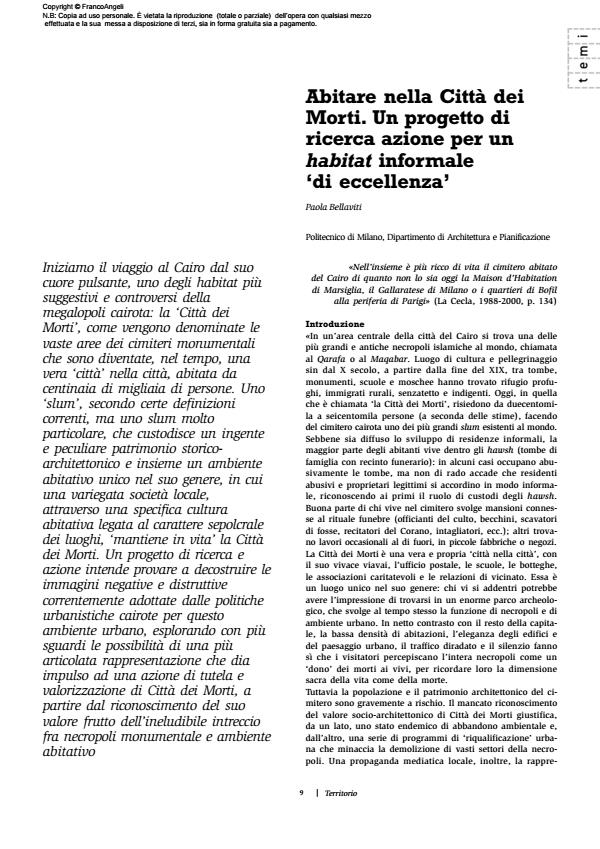Abitare nella Città dei Morti. Un progetto di ricerca azione per un habitat informale "di eccellenza"
Journal title TERRITORIO
Author/s Paola Bellaviti
Publishing Year 2009 Issue 2009/50
Language Italian Pages 11 P. 9-19 File size 1483 KB
DOI 10.3280/TR2009-050002
DOI is like a bar code for intellectual property: to have more infomation
click here
Below, you can see the article first page
If you want to buy this article in PDF format, you can do it, following the instructions to buy download credits

FrancoAngeli is member of Publishers International Linking Association, Inc (PILA), a not-for-profit association which run the CrossRef service enabling links to and from online scholarly content.
Living in the City of the Dead. A research-action project for an exceptional informal habitat - The article focuses on one of the most suggestive and controversial habitats of the Cairo megalopolis, the ‘City of the Dead’, as the vast areas of monumental cemeteries are collectively termed. Over time they have actually become a true and genuine ‘city’ within the city, inhabited by hundreds of thousands of people. It is a slum according to some definitions currently in use, but a very particular slum which is host to both a huge and special historical and architectural heritage and at the same time to a residential environment which is unique of its kind, in which a heterogeneous local society maintains the City of the Dead ‘in life’, by means of a specific residential culture linked to the sepulchral nature of the places. A research and action project intends to try and deconstruct the negative and destructive images currently adopted by Cairo’s urban planning policies for this urban environment. It does this by exploring the possibilities of a more detailed portrayal from different viewpoints in order to stimulate action to conserve and enhance the City of the Dead that is based on recognition of its value given by the ineluctable links between the monumental necropolis and the living environment.
Paola Bellaviti, Abitare nella Città dei Morti. Un progetto di ricerca azione per un habitat informale "di eccellenza" in "TERRITORIO" 50/2009, pp 9-19, DOI: 10.3280/TR2009-050002